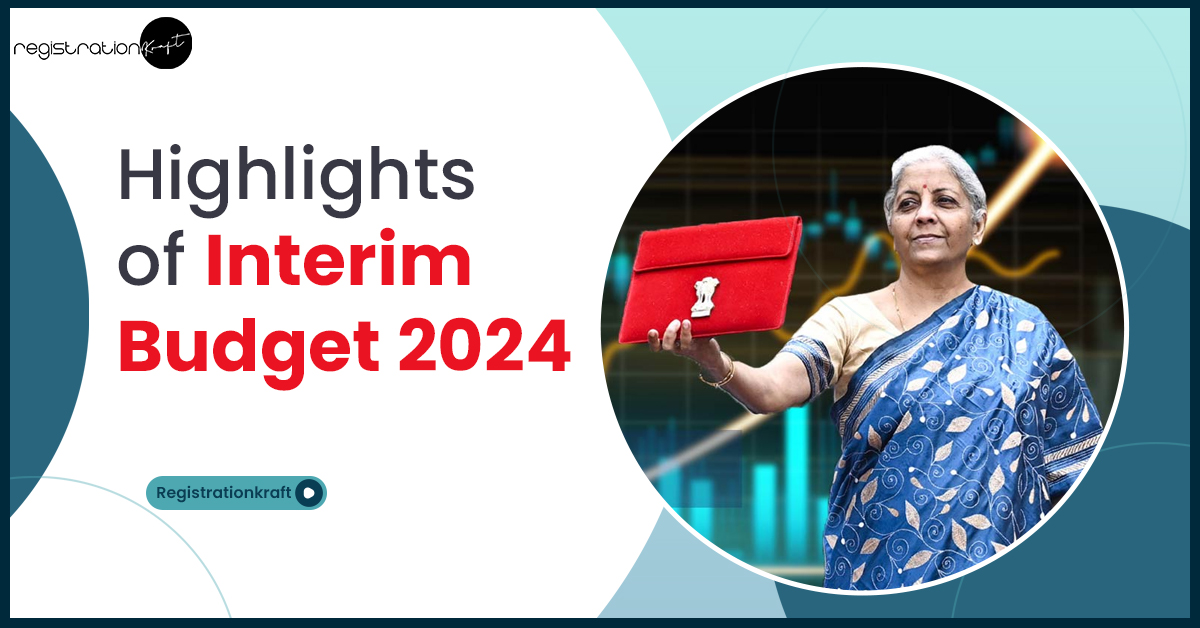The Finance Minister Smt. Nirmala Sitharaman presents the Interim Union Budget 2024-25 on February 1st. The mantra behind the budget was ‘Sabka Saath, Sabka Vikas and Sabka Vishwas’ and ‘Sabka Prayas’.
In the budget 2024 speech, FM Nirmala Sitharaman highlighted the Centre’s various programmes for women, youth, poor and farmers. They are the four major ‘castes’ and she includes “The country progress when they progress”. The full budget will be presented in July, after the formation of the new government. So, to know, why we have two budgets in 2024, read the blog, to know the difference.
Why Interim Budget is Presented in 2024?
Last month, in a conference, the Finance Minister said, that the upcoming February 1 budget will serve as a vote on account. The Interim budget is also known as the vote on account budget. In this budget, there will be no “spectacular announcements”.
Because of the election, the government presented an interim budget. However, the Lok Sabha elections will be held in April or May. This budget is a temporary financial plan to meet the government’s operational needs until the new government is formed.
Government Policies Mentioned in Interim Budget
- The focus of PM will be on the upliftment of four major castes, that is, ‘Garib’ (Poor), ‘Mahilayen’ (Women), ‘Yuva’ (Youth) and ‘Annadata’(Farmer).
- Help 25 crore people out of multi-dimensional poverty in the last 10 years.
- Direct Benefit Transfer of Rs. 34 lakh crore is transferred under PM-Jan Dhan accounts leading to savings of Rs. 2.7 lakh crore for the Government.
- PM-SVANidhi provided credit assistance to 78 lakh street vendors. 2.3 lakh have received credit for the third time.
- Provide financial assistance to 11.8 crore farmers under PM-KISAN SAMMAN Yojana.
- Crop insurance is given to 4 crore farmers under PM Fasal BimaYojana.
- Electronic National Agriculture Market (e-NAM) integrated 1361 mandis, providing services to 1.8 crore farmers with a trading volume of Rs. 3 lakh crore.
- 1 crore households to obtain 300 units of free electricity every month through rooftop solarisation. It is expected that each household will save Rs.15000 to Rs.18000 annually.
- Pradhan Mantri Kisan Sampada Yojana has benefitted 38 lakh farmers and generated 10 lakh employment.
- A provision of Rs.75,000 crore rupees as a fifty-year interest-free loan is proposed to support milestone-linked reforms by the State Governments.
Momentum for Nari Shakti
- 30 crore Mudra Yojana loans given to women entrepreneurs.
- Female enrolment in higher education has gone up by 28%.
- In STEM courses, girls and women constitute 43% of enrolment, one of the highest in the world.
- Over 70% of houses under PM Awas Yojana are given to women from rural areas.
- FDI inflow during 2014-23 of USD 596 billion was twice the inflow from 2005-14.
Aviation Sector
- Number of airports in the country doubled to 149.
- Five hundred and seventeen new routes are carrying 1.3 crore passengers.
- Indian carriers have placed orders for over 1000 new aircraft.
Direct taxes
- FM proposes to retain the same tax rates for direct taxes
- Direct tax collection tripled, and return filers increased to 2.4 times, in the last 10 years
- Government to improve taxpayer services and overall it includes:
- Outstanding direct tax demands upto Rs 25000 for the period upto FY 2009-10 withdrawn
- Outstanding direct tax demands upto Rs 10000 for financial years 2010-11 to 2014-15 withdrawn
- This will benefit one crore taxpayers
- Tax benefits to Start-Ups, investments made by Sovereign wealth funds or pension funds extended to 31 March 2025
- Tax exemption on certain income of IFSC units extended by a year to 31 March 2025 from 31 March 2024.
Indirect Taxes
- The tax rates are the same for indirect taxes and import duties. However, the GST unified the highly fragmented indirect tax regime in India
- Average monthly gross GST collection doubled to Rs 1.66 lakh crore this year
- The GST tax base has doubled
- State SGST revenue buoyancy (including compensation released to states) increased to 1.22 in the post-GST period(2017-18 to 2022-23) from 0.72 in the pre-GST period (2012-13 to 2015-16)
- 94% of industry leaders view the transition to GST as largely positive
However, GST reduced the compliance burden on trade and industry. And, the lower logistics costs and taxes helped reduce the prices of goods and services.
Tax rationalization efforts over the years
- No tax liability for income upto Rs 7 lakh, up from Rs 2.2 lakh in FY 2013-14
- Presumptive taxation threshold for retail businesses increased to Rs 3 crore from Rs 2 crore
- Presumptive taxation threshold for professionals increased to Rs 75 lakh from Rs 50 lakh
- Corporate income tax decreased to 22% from 30% for existing domestic companies
- Corporate income tax rate at 15% for new manufacturing companies
Achievements in tax-payer services
- The average processing time of tax returns has reduced to 10 days from 93 days in 2013-14
- Faceless Assessment and Appeal introduced for greater efficiency
- Updated income tax returns, new form 26AS and prefilled tax returns for simplified return filing
- Reforms in customs leading to reduced Import release time
- Reduction by 47% to 71 hours at Inland Container Depots
- Reduction by 28% to 44 hours at Air Cargo complexes
- Reduction by 27% to 85 hours at Sea Ports
Conclusion
The interim budget is presented in the Lok Sabha by the Finance Minister. The budget includes government expenditure, revenue, fiscal deficit, and financial performance till the formation of the new government. However, it does not include major policy announcements.

